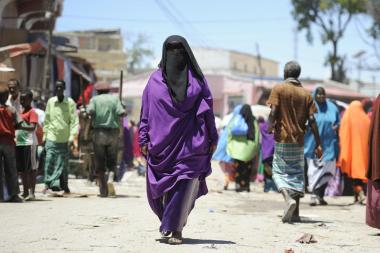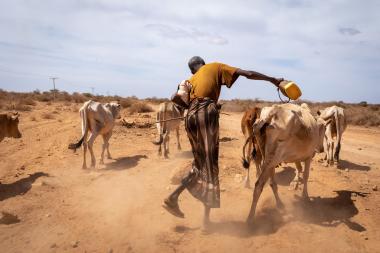Technical report
Assessing and financing loss and damage due to climate change in Somalia
If losses and damages triggered by climate change are to be addressed in national and international policy, finance and action, losses and damages need to be specified and estimated.
Publisher SPARC
To support national planning and international advocacy, this report provides policy-makers in Somalia with new estimates of current and potential future climate-attributable losses and damages.
Our key messages are:
- Direct economic impacts from droughts and floods in Somalia that are likely attributable to climate change have amounted to about 3.3% of the country’s GDP between 2000 and 2021. Agriculture and livestock climate-attributable losses and damages are estimated at $2.84 billion, which represents 4.5% of agricultural GDP.
- By the 2050s, in the absence of a significant increase in climate-resilient socioeconomic development action, the cumulative total attributable direct economic loss and damage from floods and droughts could amount to between $5 billion and $100 billion.
- Slow-onset events will also cause significant loss and damage in Somalia. Rising temperatures, increasing rainfall variability and growing evapotranspiration threaten agriculture and livestock production, with the potential for reduced crop yields, increased pest prevalence and livestock health impacts. Sea-level rise endangers coastal regions through flooding, erosion and saltwater intrusion of croplands and aquifers.
- Despite emerging opportunities to leverage international loss and damage finance, significant challenges remain. These include:
- With a limited fiscal space and competing socio-economic priorities to support the livelihoods and well-being of the people, Somalia urgently needs support from international development partners to address the rising climate-attributable losses and damages.
- The total volume of funds that will be mobilised for the Loss and Damage Fund might not be sufficient to cover widespread loss and damage.
- The willingness of international finance mechanisms to channel resources to fragile and conflict-affected countries, and the modalities for accessing such funds, are limited.
- The ability of the Government of Somalia and its partners to quantify loss and damage, and to articulate financing needs to help meet the wide range of losses and damages experienced in the national context, also represent a challenge.

Fardosa Mohamed, a 50-year-old pastoralist, walks home after collecting water at the UNDP-funded dam in Baligubadle, Somaliland, northwest Somalia
Credit Image by UNDP Somalia / CC BY-NC 2.0
Download
application/pdf
162.11 KBapplication/pdf
1.26 MB

